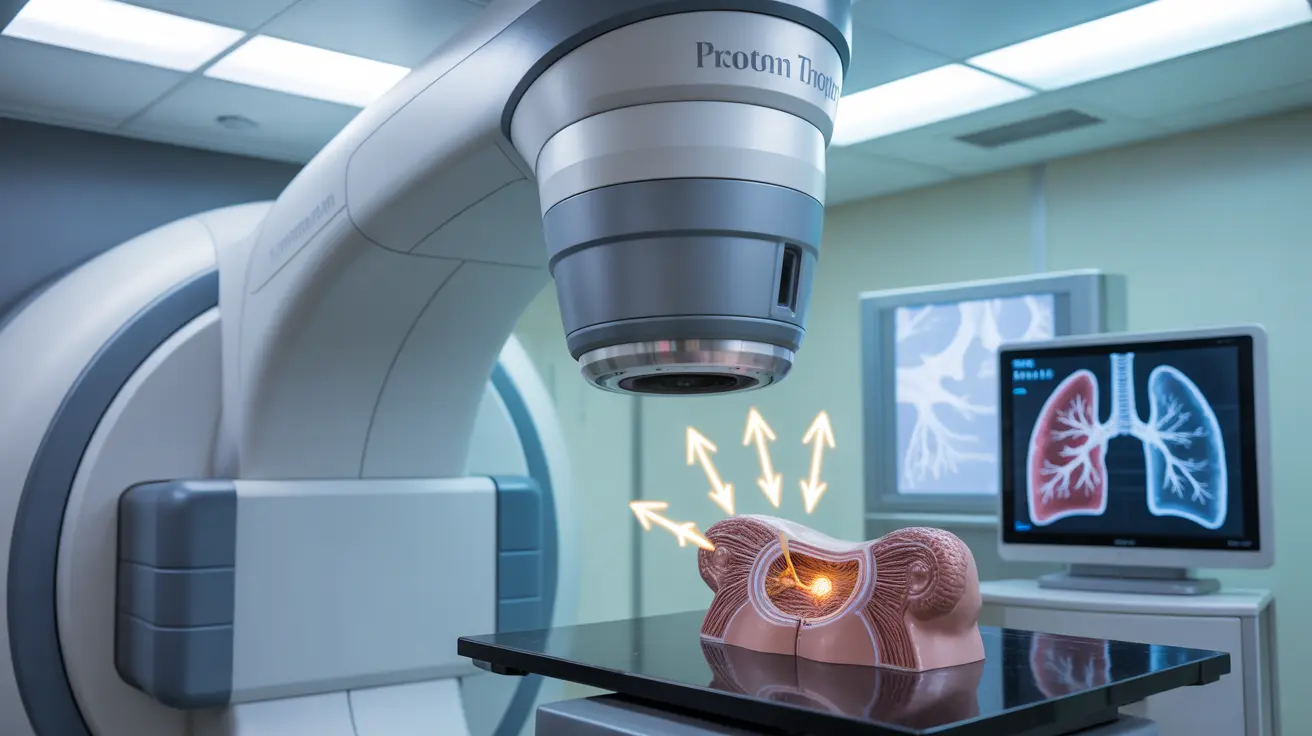Proton therapy represents one of the most advanced forms of radiation treatment available for breast cancer patients today. As medical technology continues to evolve, more patients and healthcare providers are exploring this precise treatment option as an alternative to conventional radiation therapy. Understanding the success rates and effectiveness of proton therapy can help patients make informed decisions about their breast cancer treatment journey.
With its ability to deliver targeted radiation while minimizing damage to surrounding healthy tissues, proton therapy has emerged as a promising treatment modality, particularly for patients with specific risk factors or anatomical considerations. This comprehensive guide examines the success rates, benefits, and important considerations surrounding proton therapy for breast cancer treatment.
Understanding Proton Therapy Success Rates in Breast Cancer
Current research indicates that proton therapy demonstrates comparable success rates to traditional radiation therapy for treating breast cancer, with local control rates typically ranging from 95% to 98% in early-stage breast cancer cases. These impressive outcomes are measured by the ability to prevent cancer recurrence in the treated breast area over a five-year period following treatment completion.
The success of proton therapy is particularly notable when considering its precision capabilities. Unlike conventional photon radiation, proton beams can be controlled to stop at a specific depth within tissue, allowing oncologists to deliver the prescribed radiation dose directly to the tumor while significantly reducing exposure to critical organs such as the heart and lungs.
Several clinical studies have demonstrated that proton therapy achieves excellent tumor control rates similar to conventional radiation therapy, with some research suggesting even improved outcomes in certain patient populations. The treatment's success is measured not only by cancer control but also by the reduced incidence of treatment-related complications and improved quality of life during and after treatment.
Comparing Side Effects: Proton Therapy vs Traditional Radiation
One of the most significant advantages of proton therapy lies in its reduced side effect profile compared to traditional radiation therapy. Patients receiving proton therapy typically experience fewer acute skin reactions, with studies showing approximately 30-40% less skin toxicity during treatment compared to conventional photon radiation.
The precision of proton therapy translates to markedly reduced radiation exposure to healthy organs. Research demonstrates that proton therapy can reduce heart radiation exposure by up to 50% and lung exposure by approximately 40-60% compared to traditional radiation techniques. This reduction in collateral damage leads to fewer long-term complications and improved patient tolerance during treatment.
Common side effects of proton therapy are generally milder and include fatigue, mild skin irritation at the treatment site, and temporary breast tenderness. Unlike conventional radiation, patients rarely experience severe skin burns or significant tissue damage to surrounding organs, making the treatment more comfortable and manageable for most individuals.
Special Benefits for High-Risk Patients
Proton therapy offers particular advantages for breast cancer patients who have pre-existing heart or lung conditions, making them high-risk candidates for conventional radiation therapy. The treatment's precision allows oncologists to minimize radiation exposure to these vital organs, reducing the risk of radiation-induced heart disease or lung complications.
Patients with left-sided breast cancer especially benefit from proton therapy, as the heart is located closer to the left breast. Studies indicate that proton therapy can reduce the risk of cardiac events by up to 70% compared to traditional radiation in these patients. This benefit is particularly crucial for younger patients who may live many decades after treatment and want to minimize long-term health risks.
Additionally, patients who have previously received chest radiation therapy, those with genetic predispositions to heart disease, or individuals with compromised lung function may be ideal candidates for proton therapy. The treatment allows these high-risk patients to receive necessary radiation therapy while protecting already vulnerable organs from additional damage.
Treatment Duration and Schedule
The typical duration of proton therapy treatment for breast cancer spans approximately 3 to 6 weeks, with patients receiving daily treatments five days per week. Each individual treatment session lasts about 15 to 30 minutes, though the actual beam delivery time is usually just a few minutes. The total number of treatments ranges from 15 to 33 sessions, depending on the specific treatment protocol and individual patient factors.
Some patients may be candidates for hypofractionated proton therapy, which involves delivering higher doses of radiation over fewer treatment sessions. This approach can reduce the total treatment time to approximately 3 to 4 weeks while maintaining the same level of effectiveness. The shorter treatment schedule can be particularly beneficial for patients who live far from treatment centers or have work and family obligations.
The treatment planning process before proton therapy begins typically takes 1 to 2 weeks and involves detailed imaging studies, treatment simulation, and precise dose calculations. This thorough preparation ensures optimal treatment delivery and maximum effectiveness while minimizing potential side effects.
Long-Term Studies and Evidence
While proton therapy for breast cancer is a relatively newer treatment modality, emerging long-term studies are providing encouraging evidence of its safety and effectiveness. Multi-institutional research with follow-up periods of 5 to 10 years demonstrates sustained cancer control rates comparable to conventional radiation therapy, with significantly reduced rates of secondary cancers and cardiac complications.
The Massachusetts General Hospital and other leading cancer centers have published studies showing excellent long-term outcomes in breast cancer patients treated with proton therapy. These studies indicate that the reduced radiation exposure to healthy tissues translates into meaningful clinical benefits over time, including lower rates of radiation-induced heart disease and lung complications.
Ongoing clinical trials continue to evaluate the long-term effectiveness of proton therapy, with several large-scale randomized studies currently in progress. Preliminary data from these trials consistently support the safety and efficacy of proton therapy, particularly in high-risk patient populations where organ sparing is critical.
Frequently Asked Questions
What is the success rate of proton therapy for treating breast cancer?
Proton therapy demonstrates excellent success rates for breast cancer treatment, with local control rates of 95-98% in early-stage disease, comparable to conventional radiation therapy. The treatment effectively prevents cancer recurrence while offering superior protection of healthy organs, making it highly successful both in terms of cancer control and quality of life preservation.
How does proton therapy for breast cancer compare to traditional radiation in terms of side effects?
Proton therapy produces significantly fewer side effects compared to traditional radiation therapy. Patients experience 30-40% less skin toxicity, reduced fatigue, and minimal damage to surrounding healthy organs. The precision of proton beams results in fewer acute and long-term complications, making the treatment more tolerable and safer for most patients.
What are the benefits of proton therapy for breast cancer patients with heart or lung risks?
For patients with pre-existing heart or lung conditions, proton therapy offers substantial benefits by reducing radiation exposure to these organs by 40-60% compared to conventional radiation. This precision significantly lowers the risk of radiation-induced cardiac events and lung complications, making it an ideal treatment option for high-risk patients who need to protect already vulnerable organs.
How long does proton therapy treatment typically last for breast cancer?
Proton therapy treatment for breast cancer typically lasts 3 to 6 weeks, with daily sessions Monday through Friday. Each treatment session takes 15-30 minutes, though actual beam delivery is just a few minutes. Some patients may qualify for shorter hypofractionated schedules lasting 3-4 weeks, depending on their specific treatment plan and medical factors.
Are there any long-term studies confirming the effectiveness and safety of proton therapy for breast cancer?
Yes, emerging long-term studies with 5-10 year follow-up periods demonstrate that proton therapy maintains excellent cancer control rates while significantly reducing long-term complications. Research from major cancer centers shows sustained effectiveness comparable to conventional radiation, with notably lower rates of secondary cancers and organ damage, confirming both the safety and efficacy of this advanced treatment approach.




